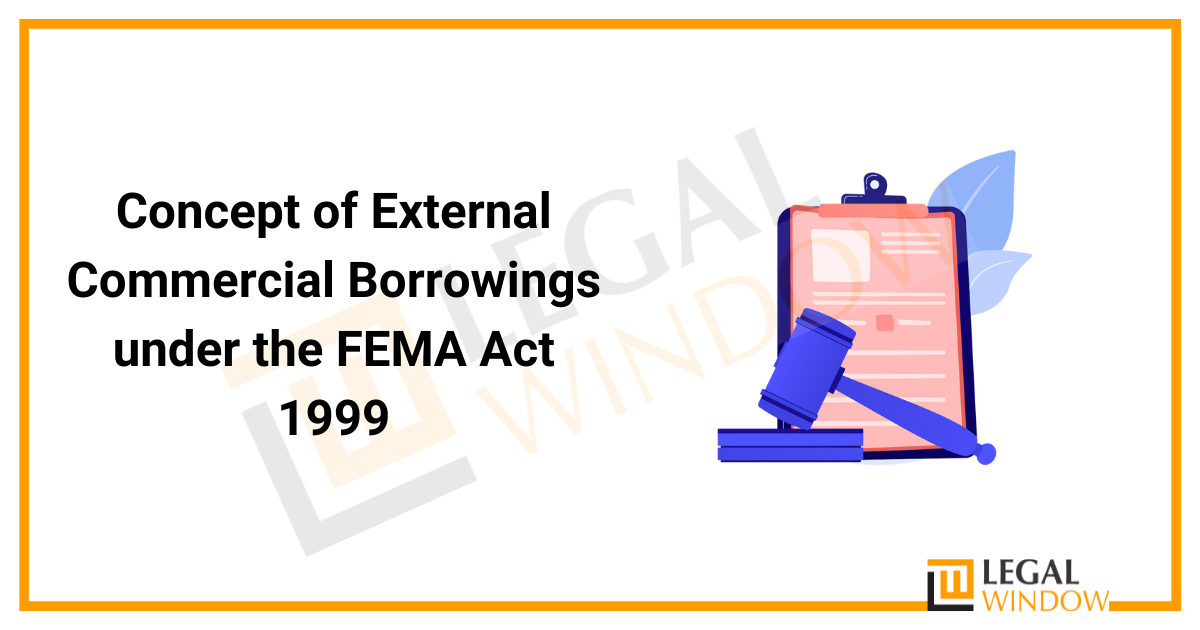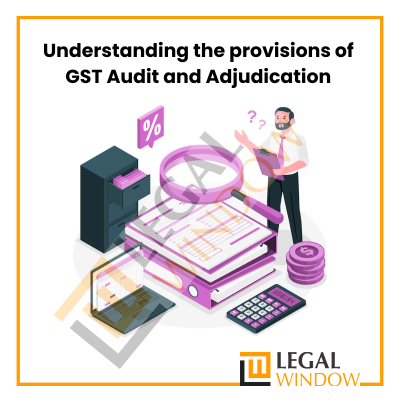
External Commercial Borrowings (ECB) is borrowings made by an eligible entity in India from any recognised entity outside India for commercial reasons. Debt financing has traditionally been a favoured type of company finance due to inherent benefits such as security creation, minimum guaranteed returns, and tax efficiency for both the lender and the borrower. As a result, funding through the ECB technique is becoming more common in bringing investment or loan for new projects under Reserve Bank of India permitted locations (RBI). This article will go through External Commercial Borrowings under the FEMA Act, 1999.
The goal of this essay is to help readers understand the External Commercial Borrowings and its influence on the Indian economy.
| Table of Content |
The Basis of External Commercial Borrowings (ECB)
ECBs are governed by the RBI Master Direction- External Commercial Borrowings, Trade Credits, and Structured Obligations, as well as the Foreign Exchange Management Act, 1999. (FEMA).
The Concept of External Commercial Borrowings (ECB)
External Commercial Borrowings are commercial loans given by qualifying resident companies to recognised non-resident business that must fulfil criteria such as the Minimum Average Maturity Period (MAMP), allowed and non-permitted end-uses, maximum All-In-Cost (AIC), and so on.
- Secure commercial loans
- Recognized Mortgage Lenders (Non-Resident)
- Borrowers who qualify (Resident)
- For permitted end use and under set limits (MAMP, AIC)
Framework of External Commercial Borrowings (ECB)
The framework for raising loans through the ECB (hence it acts as the ECB Framework) consists of two options:
| Sr. No. | Parameters | ECBs denominated in foreign currencies | ECBs denominated INR | ||||||||||||||||||
| 1. | Repayment & Borrowing | Borrowing in INR or FCY and repaying in FCY | Borrowing in INR or FCY and repaying in INR | ||||||||||||||||||
| 2. | Types of ECB |
|
|
||||||||||||||||||
| 3. | Borrowers who are eligible |
|
|||||||||||||||||||
| 4. | Recognized Lenders | The lender must be a resident of a jurisdiction that is a member of the Financial Action Task Force (FATF) or the International Organization of Securities Commissions (IOSCO), including when transferring ECB. However,
Underwriting by overseas branches/subsidiaries of Indian banks for issuances by Indian banks, on the other hand, will be prohibited. |
|||||||||||||||||||
| 5. | Minimum Average Maturity Period (MAMP) |
for the categories listed in (b) to (e) above –
|
|||||||||||||||||||
| 6. | All-in-Cost Ceiling per annum Other Costs | The benchmark rate plus a spread of 450 basis points.
Prepayment charges/penal interest, if applicable, for default or breach of covenants shall not exceed 2% over the negotiated rate of interest on the outstanding principal amount and will fall outside of the all-in-cost cap. |
|||||||||||||||||||
| 7. | End-uses (Negative list) | The following would be on the negative list, for which the ECB revenues could not be used:
|
|||||||||||||||||||
| 8. | Rate of Exchange | Currency conversion of the FCY ECB into the INR ECB
FCY ECB into INR ECB can be at the exchange rate existing on the day of the agreement for such change between the parties involved, or at a rate less than the rate prevailing on the date of the agreement, if the ECB lender agrees. |
To convert to Rupees
The exchange rate applicable on the day of settlement shall be the rate in effect at the time of settlement. |
||||||||||||||||||
| 9. | Provision for Hedging | In the case of foreign currency exposure, company’s raising ECB are expected to follow the hedging rules established by the relevant sectoral or prudential authority. Companies in the infrastructure space:
The following operational components of hedging must be ensured:
|
|
||||||||||||||||||
| 10. | Change in borrowing currency | The ECB may freely change its currency from one freely convertible foreign currency to another freely convertible foreign currency as well as to INR. | It is not permissible to exchange INR for any freely convertible foreign currency. | ||||||||||||||||||
Leverage and Limitation
Every fiscal year, all qualified debtors can raise ECB up to USD 750 million or equivalent via the automated procedure. Furthermore, for FCY-denominated ECB received from direct foreign equity holders, the ECB liability-equity ratio cannot exceed 7:1 for ECB raised under the automated approach. If the total outstanding amount of all ECB, including the proposed one, is less than USD 5 million or its equivalent, this percent will not apply.
Raising the ECB Procedure
All ECB can be raised automatically if they match the conditions established in this framework. In cases when the approval route is involved,
- Borrowers may submit an application for inspection to the RBI in the necessary format (Form ECB) through their AD Category I bank.
- These situations will be weighed against the general rules, the macroeconomic environment, and the merits of the particular proposals.
- ECB proposals submitted at the Reserve Bank that above a certain threshold limit (which may be changed from time to time) will be forwarded to the RBI’s Empowered Committee.
- The Empowered Committee will have both external and internal members, and the RBI will make the final decision in cases where the Empowered Committee’s recommendations are followed.
- Entities interested in raising ECB using the automated approach should contact an AD Category I bank with their proposal and a fully completed Form ECB.
Reporting by the ECB
Borrowers must report genuine ECB transactions to the AD Category I bank on a monthly basis using Form ECB 2 Return.
 Endnote
Endnote
For the near future, the international market is projected to be favourable, resulting in increased borrowings by India. With the RBI’s oversight, defining industry-specific variations for the automatic and approved routes, expressly stating the end-use limitation and minimum average maturity length, and so on, it is expected that ECBs would be the priority for attracting investment to India. Furthermore, with the RBI authorising the use of ECB revenues for loan repayment, the Indian GDP is projected to remain stable while also allowing Indian companies to seek necessary funding from the outside market at cheaper interest rates, which may not be approved through local banks or NBFC.
If you are interested in knowing more about the ECB under FEMA. Then kindly connect to our experts on Legal Window.
CS Urvashi Jain is an associate member of the Institute of Company Secretaries of India. Her expertise, inter-alia, is in regulatory approvals, licenses, registrations for any organization set up in India. She posse’s good exposure to compliance management system, legal due diligence, drafting and vetting of various legal agreements. She has good command in drafting manuals, blogs, guides, interpretations and providing opinions on the different core areas of companies act, intellectual properties and taxation.
Categories
- Agreement Drafting (23)
- Annual Compliance (11)
- Change in Business (36)
- Company Law (148)
- Compliance (89)
- Digital Banking (3)
- Drug License (3)
- FEMA (17)
- Finance Company (42)
- Foreign Taxation (6)
- FSSAI License/Registration (14)
- GST (118)
- Hallmark Registration (1)
- Income Tax (199)
- Latest News (34)
- Miscellaneous (164)
- NBFC Registration (8)
- NGO (14)
- SEBI Registration (6)
- Section 8 Company (7)
- Start and manage a business (20)
- Startup/ Registration (126)
- Trademark Registration/IPR (40)
Recent Posts
- Detailed Analysis of Section 179 of the Companies Act, 2013 April 24, 2024
- Maximise Your Tax Savings: Power of Form 12BB April 23, 2024
- Cryptocurrency startups and Regulatory compliance April 22, 2024
About us
LegalWindow.in is a professional technology driven platform of multidisciplined experts like CA/CS/Lawyers spanning with an aim to provide concrete solution to individuals, start-ups and other business organisation by maximising their growth at an affordable cost.







